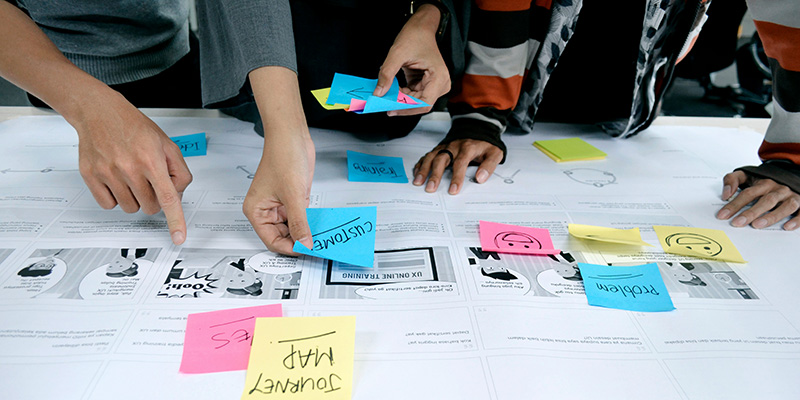Spring is coming and that means the days are getting longer, the leaves are turning green and capture management season is upon us. One of the areas that seems to be at the forefront of many requests for proposal (RFPs) is storytelling for impact. After all, it’s not enough to write technical volumes that outline what your organization did. A good proposal also includes success metrics.

However, digging into success metrics can be difficult, especially when your team is explaining how those great customer experiences (CX) translated into success. When I worked in the startup space, we often utilized very specific industry tools like Net Promoter Score (NPS), System Usability Scale (SUS) and Google Analytics (GA). These quantitative metrics were easy ways to know at a macro-level whether or not our intended audiences found our digital offerings useful. If NPS or SUS scores were good, we were doing something right. If they were bad, well, we needed to go do some research to understand why and make some changes.
Government doesn’t — shouldn’t — rely on the same measures. At least not completely. Instead, it’s important to be more qualitative, especially if you want to elevate your RFP response. Here are some ways to think about success within your agency initiatives:
- Reduction in human support. Having fewer help desk tickets (or support center calls) within a specific period of time can indicate that your visitors were able to do what they needed to, on their own, without requiring assistance. Reduction in support tickets and calls is a perfect stat to highlight success.
- Reduction in office visits. If you’re an agency that has local or regional offices (like Veterans Affairs, Social Security Administration, Internal Revenue Service), it can be a sign of success if users are able to do tasks online instead of having to come in. This may not always be an option but for offices that handle a lot of in-person transactions, moving tasks online, and highlighting the reduced number of in-person visits, can be a huge win for digital transformation initiatives.
- Shorter processing times. Generally speaking, anytime a user or visitor is able to complete a set of tasks (without error or additional assistance) in less time is a win. As an example, I was one of the beta testers for the upcoming streamlined State Department passport renewal system and it took me less than 10 minutes to apply, take a photo and pay, all from the comfort of my home. I received my new passport 16 days later. That was a huge time savings for the agency and for me. (Note: the nationwide rollout is currently delayed.)
- Fewer mistakes in forms and applications. When your users are provided clear instructions in plain language, they’re far less likely to have issues using your forms which means less time reprocessing erroneous submissions. Having a sense of saved employee hours is a great metric for gauging success of such efforts.
- Ability to do things directly with an agency they couldn’t do before. Of course, moving an entire process from in-person/manual to online is almost always a big deal, and worthy of measuring. The IRS’ brand new free online tax filing pilot is one great example that’s sure to save thousands of hours in processing while also expediting refunds, numbers that would make any RFP response stand out.
In this day and age, the public expects to be able to do a lot online and if your organization is one of the thousands who are building these solutions, staying on top of how those efforts are paying off for agencies can go a long way in crafting a winning narrative and allowing those of us doing business development to capture some wins!
Emily Ryan has worked cross-functionally as a designer, full-stack developer and UX researcher to solve a variety of digital issues for public and private sector spaces, focusing on civic tech. She’s worked across start-ups, federal government and consulting agencies. She holds a BFA in Design, an M.A. in Criminal Law and is currently pursuing an M.A. in Government, focusing on technology’s influences and impacts on global democratic movements and free and open elections. In her free time she runs ultramarathons and travels, preferring locations with traditional European holiday markets, walking food tours and modern art exhibits.





Leave a Reply
You must be logged in to post a comment.